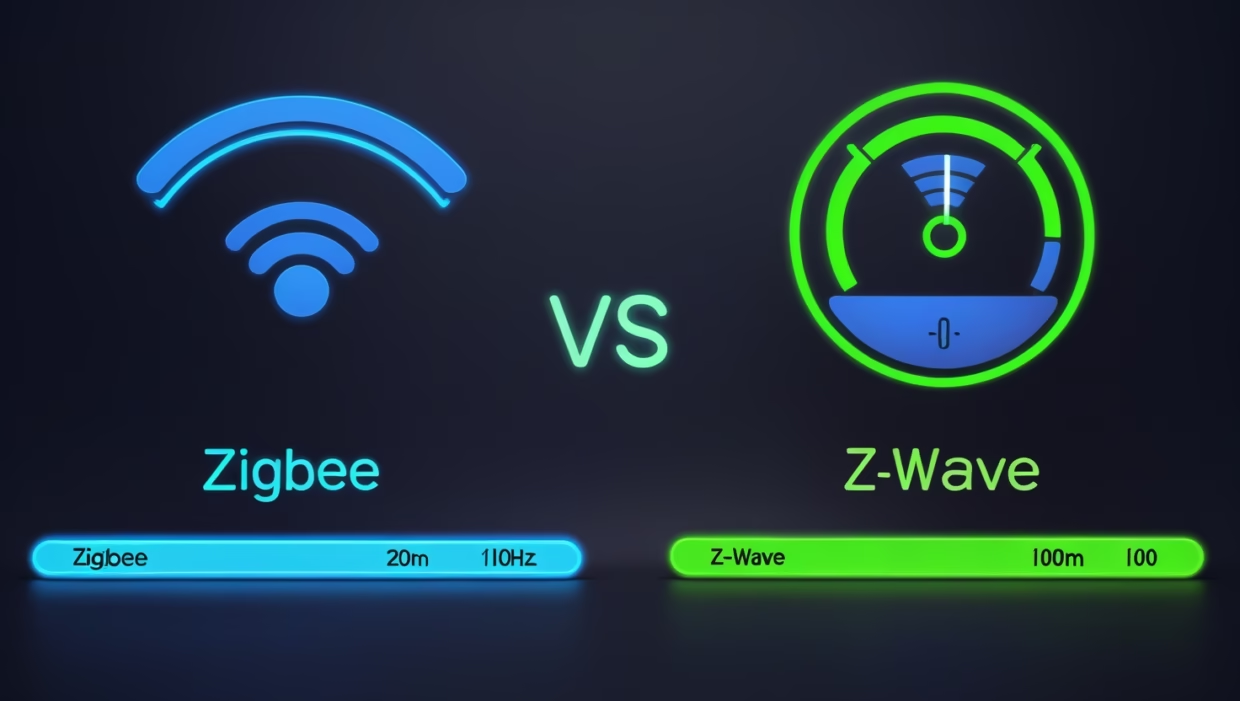
What is z wave and zigbee?
They are simply the language that devices communicate with each other.
This is called zigbee protocol or z wave protocol.
Some devices work with Z wave, and others work with Zigbee, the latter being the most common.
What is the wifi?
It is the standard that includes all protocols and technologies, including Zigbee and Z Wave and more.
So what is the difference between zigbee protocol, z wave protocol, and Wi-Fi?
Let me give you an example. You are building a house.
(z wave and zigbee protocol) is the language that the workers understand.
How do they handle the building materials, and how do they put everything in its place?
While Wi-Fi is a complete house plan that includes the language that workers understand, the building materials, the construction paths that workers will walk on, and all future connections, all in short.
Does Z Wave use WiFi?
Put, no, because Wi-Fi uses a higher frequency of 2.4 GHz or 5G, while z wave uses short radio waves, which makes it suitable for smart home devices because of its low power consumption, allowing for a longer battery life of up to several years.
what is z wave frequency?
Z-Wave operates within the 868-915 MHz frequency band, depending on the specific region.
- Europe: 868.4 MHz and 869.85 MHz.
- North America: 908.4 MHz and 916 MHz.
- Other regions: May have slightly different frequencies.
These frequencies fall within the Ultra High Frequency (UHF) band of the radio spectrum.
what is zigbee frequency?
Zigbee primarily operates in the 2.4 GHz band.
While it can also operate in the 915 MHz band (North America) and the 868 MHz band (Europe), 2.4 GHz is the most common frequency band for Zigbee devices.
summary
Zigbee and Z-Wave are two popular wireless protocols used in smart home and automation systems, each with unique features that make them suitable for specific applications.
Zigbee:
- Technology: Zigbee is based on the IEEE 802.15.4 standard and operates at 2.4 GHz (globally) or 868/915 MHz (in some regions).
Key Features:
- Low Power Consumption: Ideal for battery-operated devices.
- Mesh Networking: Supports multi-hop communication, enhancing range and reliability.
- High Compatibility: Works with devices from major brands like Philips Hue, Amazon Echo, and Samsung SmartThings.
- Applications: Used in smart lighting, sensors, climate control, and security systems.
- Challenges: May experience interference with Wi-Fi networks due to the shared 2.4 GHz frequency.
Z-Wave:
- Technology: Z-Wave operates on a lower frequency (typically 908.42 MHz in North America), reducing interference with Wi-Fi.
Key Features:
- High Reliability: Less prone to interference due to its lower frequency.
- Mesh Networking: Also supports multi-hop communication for extended range.
- Interoperability: All Z-Wave certified devices are compatible with each other.
- Applications: Commonly used in security systems, door locks, smart lighting, and sensors.
- Challenges: Less widespread than Zigbee due to higher licensing costs.
Comparison:

- Speed: Zigbee is slightly faster (250 kbps) compared to Z-Wave (100 kbps).
- Range: Z-Wave has a better range (up to 100 meters outdoors) compared to Zigbee (around 20 meters).
- Compatibility: Zigbee supports a wider range of devices, but Z-Wave ensures better interoperability among certified devices.
Conclusion
Both Zigbee and Z-Wave are excellent choices for smart homes, but the decision depends on your needs. If you prioritize broader compatibility and lower power consumption, Zigbee might be the better option. If you’re looking for higher reliability and minimal interference, Z-Wave is the ideal solution.
For American consumers, Z-Wave’s lower frequency makes it a strong choice for avoiding Wi-Fi interference, while Zigbee’s widespread adoption and integration with major smart home ecosystems offer flexibility and convenience.
Devices that support both modes Read more…











Be the first to leave a comment